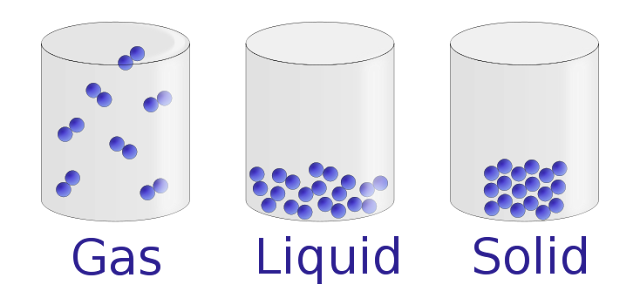States of Matter Solids, Liquids and Gases
Everything around us whether it is visible or invisible (gases) are matters in different forms. Matter can conventionally be found in one of the three stages of solid, liquid or gases.
The word Matter has several meanings. Scientifically, the matter is anything that occupies space and has mass.
The matter is comprised of small particles called atoms and molecules (groups of items). Atoms are the smallest unit of matter.
Three different types of matter can easily be understood with the example of water because water is the only common substance that is naturally found as a solid, liquid, or gas.
Particles of matter don't change. They have similar quantities of protons and electrons in all the states.
States of Matter
1. Solid
In a solid-state, atoms of matter are stuffed together so firmly that they can't move. This is the reason solids are so hard.
2. Liquid
In most liquids, the atoms are less densely packed, allowing them to move around. The particles are still held firmly, but not nearly as tightly as when they were in a solid-state.
3. Gas
The particles and atoms in gases are significantly more spread out than in solids or fluids. Gas can be compacted considerably more effectively than a solid or liquid.
Matter Changes from one state to another when you apply or remove heat, or when you put pressure on matter.
Plasma happens at strangely high temperatures and can be found in stars and lightning bolts. Plasma is yet another stage of the matter.
Stonebridge Academy After School Programs McKinney Tx





Comments
Post a Comment